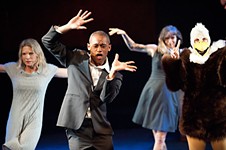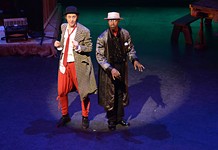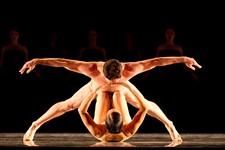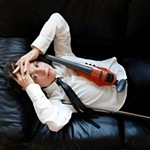Headlong Dance Theatre: Fusion Cuisine
Fusion cuisine
Reviewed by Andrew Long, Fri., Jan. 29, 2010
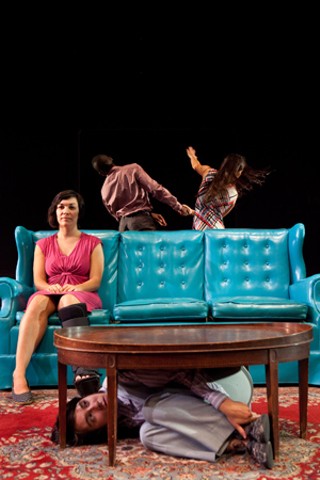
Sitting in a darkened theatre, just before the curtain rises, one never knows exactly what will be served up. The anticipation that mounts before the performance begins is akin to what you feel in a newly discovered restaurant as you patiently wait for your epicurean delight to arrive. Austin is blessed to have so many eclectic eateries; they make going out such a pleasurable experience. And the same can be said for our stage fare, especially when dance and theatre are used as a basis to inform each other (with one acting as a side dish or a spice or garnish to the other) or inventively mixed together to make a rich performative fusion. If you ever had the pleasure of seeing touring artists Carbone 14, Pina Bausch, Liz Lerman, 33 Fainting Spells, or Paula Hunter or our own Rude Mechanicals, Allison Orr, or Heloise Gold, you'll understand what a kinesthetic gastronomic event is all about.
Philadelphia's Headlong Dance Theater, presented by Dance Umbrella at the Long Center this week, understands this mix. Founded in 1993 by co-directors David Brick, Andrew Simonet, and Amy Smith, HDT has garnered stellar reviews and audience adulation for its collaborative theatrical lens. Although primarily dance, the performances are greatly informed by ideas, conceptual viewpoints, and rich combinations of theatrical styles. "We always start together with a specific theme or concept. With this new work, we took a completely different route by adding another collaborator of sorts to the mix," Smith explains.
That additional cook in the studio was choreographer Tere O'Connor, who served up a richly moving work in Austin in 2008. "Tere gave us the provocation to make three separate works on the same six dancers without talking to one another about it. All three works were then performed live, back-to-back, each of us discovering what the other had made for the first time. From there, we collectively created a fourth piece titled more. The result wasn't a combination or best of; rather, we made a new work out of the questions and dialogue the other three pieces invoked," Smith says.
"We wanted to mess up our collaboration. We got new tools from Tere, and he provoked us to ask new questions through a different kind of research. It was powerful because you couldn't conceptualize beforehand," Simonet says.
The result veers away from HDT's usual fare. "A lot of our work in the past has been purposefully humorous, a bit self-mocking, and would directly engage the audience. This piece is darker and more self-reflective," Smith explains.
"We ended up making a formal piece that mirrors the process of our body's life transformation. The piece is more of a mosaic than a story. There are layers built upon layers. It's a reflection on life. We were interested in the transition of the day and life of the body, including the mundane as well as the epic, as they do happen simultaneously," Simonet says.
HDT's shift away from overt narrative was revealed through what O'Connor calls "emerging content." By letting go of the initial creative response in the studio, formable layers emerged, tapping something deeper. "This piece is much more poetic than what we've created previously. It is an emotional and intense work about the fragility of our bodies. Just like poetry, it asks you to bring your attention to it before it bursts open. You're not in a known structure or universe right away," Brick says.
It is promising when artists are willing to abandon what they know to discover something new. Only then does innovation occur. HDT's creative departure and less-is-more approach hold great promise. And they might just have you leaving the theatre delighted that you tried something new and tasty.
Headlong Dance Theater will perform more. Jan. 29-30, Friday, 8pm; Saturday, 3 & 8pm, in the Rollins Studio Theatre at the Long Center, 701 W. Riverside. For more information, call 450-0456 or visit www.danceumbrella.com.





